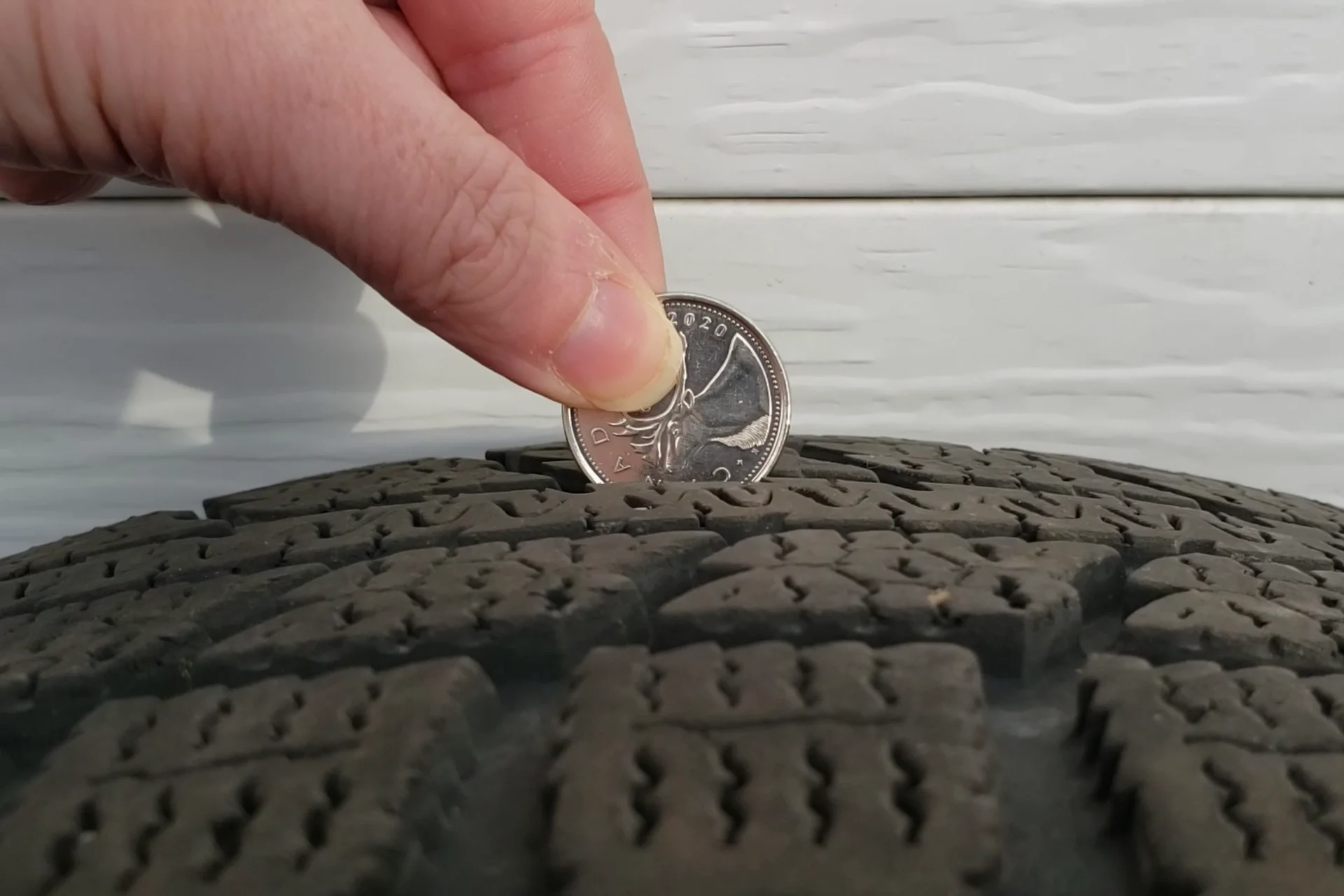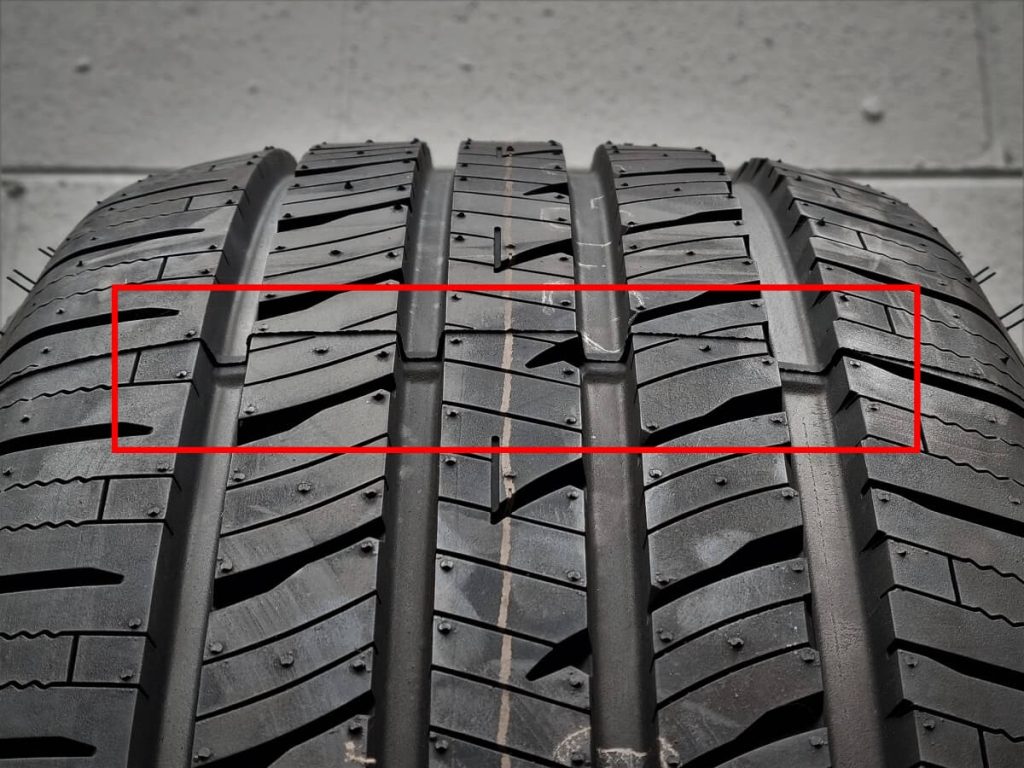<
The tread depth of a tire makes a huge difference — it’s what ensures grip on wet or snowy roads, reduces the risk of hydroplaning, and directly affects your braking distance. Driving on worn-out tires means losing braking power and safety margins in challenging conditions.

Grab a Canadian quarter. Insert it into a tread groove with the caribou’s nose pointing toward the tire.
CAA-Quebec recommends this simple visual method for quickly checking your tread depth. The Quebec government also reminds drivers that if you can see the caribou’s nose, your tread depth is too low for the season.

Most tires are designed with small raised bars (called wear bars or TWI) built into the main grooves. When the tread surface becomes level with these bars, the tire has reached its legal wear limit and should be replaced.
These signs can indicate not just wear, but also potential alignment or air pressure issues.
The Canadian Automobile Association recommends starting the winter season with at least 6/32 in (≈4.8 mm) of tread depth to maintain a solid safety margin.
Tread depth is a simple but crucial indicator of safety. Using the quarter test, checking the wear bars, or inspecting the grooves gives you a quick idea of your tires’ condition. When tread depth reaches around 4 mm in winter, it’s time to plan a replacement to drive safely.
If you’re looking for safe, affordable tires delivered straight to your door, visit 4tires.ca — it’s simple, fast, and budget-friendly.
BF GOODRICH
BRIDGESTONE
CONTINENTAL
GENERAL
GOOD YEAR
IRONMAN
MAZZINI
MICHELIN
SAILUN
YOKOHAMA